The karst mountains and countryside around YangShuo, GuangXi province ...
[video v=bC5QHEJcRog]The LongJi rice terraces, YunNan province ...
Plus more videos ...
Live more ...
The karst mountains and countryside around YangShuo, GuangXi province ...
[video v=bC5QHEJcRog]The LongJi rice terraces, YunNan province ...
Plus more videos ...
With Travel With Fawn ...
[video v=rb89zaap_nM]Daocheng Yading, often referred to as "The Last Shangri-La," is located in the southwestern part of Sichuan Province, China. This remote and pristine region is part of the Garzê Tibetan Autonomous Prefecture and is renowned for its stunning natural beauty, including majestic snow-capped mountains, clear alpine lakes, and lush forests. Daocheng Yading is considered one of the most beautiful places in China, attracting travelers seeking untouched landscapes and spiritual solace.
Daocheng Yading is located at an altitude of over 4,000 meters (13,123 feet) above sea level. It is part of the Hengduan Mountain Range, where the Tibetan Plateau begins. The area is characterized by its unique geological formations, including towering peaks, deep valleys, and a series of glacial lakes. Its remote location has helped preserve its natural beauty and biodiversity, making it a haven for both nature lovers and wildlife enthusiasts.
Yading holds a special place in Tibetan Buddhism and is considered a sacred site. The three main peaks of Yading—Chenrezig (Xiannairi), Jampayang (Yangmaiyong), and Chanadorje (Xialuoduoji)—are believed to be manifestations of Bodhisattvas, making them objects of pilgrimage for Tibetan Buddhists. Throughout history, pilgrims have journeyed to Yading to pay their respects, meditate, and seek blessings.
The region is also home to several Tibetan communities that have maintained their traditional way of life. Visitors to Daocheng Yading can experience Tibetan culture, including local customs, religious practices, and Tibetan cuisine. The presence of Tibetan monasteries and prayer flags throughout the landscape adds to the spiritual ambiance of Yading.
Daocheng Yading is a paradise for trekkers and adventure enthusiasts. Several well-marked trails offer varying levels of difficulty, catering to both casual hikers and experienced trekkers. The most popular trekking route is the Yading Outer Kora, a challenging multi-day trek that circles the three sacred mountains. This trek provides a comprehensive experience of Yading's natural beauty and spiritual significance.
Another popular option is the Inner Kora, a shorter but still demanding trek that takes hikers closer to the base of the sacred peaks. For those seeking a less strenuous experience, day hikes to Milk Lake and Five Color Lake offer stunning views and a taste of Yading's grandeur without the need for extensive trekking.
Daocheng Yading is known for its rich biodiversity. The region's varied altitudes and climates support a wide range of plant and animal species. The lower altitudes are covered in dense forests of pine, fir, and rhododendron, which bloom spectacularly in spring. As you ascend, the landscape transitions to alpine meadows, home to wildflowers and medicinal herbs.
The region is also a sanctuary for wildlife, including species such as the Tibetan antelope, red panda, snow leopard, and various birds of prey. Birdwatchers will find Yading to be a prime location for observing both resident and migratory bird species. Efforts are made to preserve the ecological integrity of Yading, making it a model for conservation in China.
The climate of Daocheng Yading is characterized by cold winters and mild summers, with significant temperature variations between day and night. The best time to visit is during the spring (April to June) and autumn (September to October) months. In spring, the region comes alive with blooming flowers and lush greenery, while autumn offers stunning foliage and clear skies, making it ideal for photography and outdoor activities.
Winter visits are possible but can be challenging due to heavy snowfall and cold temperatures, which may restrict access to some areas. Travelers should be prepared for high-altitude conditions year-round and pack accordingly.
Daocheng Yading can be accessed by air and road:
| Transport Mode | Details |
|---|---|
| By Air | Daocheng Yading Airport is the world's highest civilian airport, located at an altitude of 4,411 meters. Direct flights are available from major Chinese cities such as Chengdu, Chongqing, and Xi'an. From the airport, visitors can take a bus or taxi to Daocheng town and then to Yading. |
| By Road | Road travel to Daocheng Yading involves scenic but long drives through mountainous terrain. Buses and private vehicles can be hired from Chengdu, with the journey taking around 20-25 hours. The drive, though lengthy, offers spectacular views of the Tibetan Plateau and the chance to explore other attractions en route. |
Due to its height this part of the Great Wall of China was single sided and narrow. Through the centuries of wind and rain it has become greatly eroded. Although that adds to the charm, it is a very dangerous hike that is NOT to be experienced first hand, but rather by this film. Enjoy the thrill from your armchair, only. And we mean that.
[video v=npBR5osLQTU start=5:00]With Beijing Old Liu ...
[video v=RgAcPM2kng4]LuShui YunMen Scenic Area, located in the picturesque GuiZhou province, is a stunning natural attraction known for its lush landscapes, serene waters, and breathtaking views. The area offers a perfect blend of natural beauty and cultural heritage, making it an ideal destination for nature lovers and cultural enthusiasts alike.
LuShui YunMen Scenic Area has a rich history that dates back centuries. The area has long been revered for its natural beauty and has inspired poets, artists, and travelers throughout the ages. The scenic area is also home to several historical and cultural sites that reflect the diverse heritage of GuiZhou province.
YunMen Cave is one of the most famous attractions in the LuShui YunMen Scenic Area. The cave features stunning stalactites and stalagmites, creating a mesmerizing underground landscape. Visitors can explore the cave's intricate formations and enjoy the cool, serene atmosphere.
The LuShui Waterfall is a spectacular sight, cascading down the mountainside into a crystal-clear pool below. The waterfall is surrounded by lush vegetation, making it a perfect spot for photography and relaxation. The sound of the water and the fresh air provide a rejuvenating experience.
The scenic area boasts numerous hiking trails that offer breathtaking views of the surrounding mountains and valleys. The trails vary in difficulty, catering to both casual walkers and experienced hikers. Along the way, visitors can encounter diverse flora and fauna, adding to the adventure.
The scenic area is home to several traditional villages where visitors can experience the rich cultural heritage of the local ethnic communities. These villages offer a glimpse into the traditional lifestyle, architecture, and customs of the people who have lived in harmony with nature for generations.
LuShui YunMen Scenic Area is not only known for its natural beauty but also for its vibrant cultural heritage. The area is inhabited by various ethnic groups, each with its unique traditions, festivals, and crafts. Visitors can witness traditional dances, music, and local crafts that reflect the cultural richness of the region.
Explore the scenic beauty of LuShui YunMen by embarking on one of the many hiking and nature trails. These trails offer a chance to connect with nature, enjoy panoramic views, and discover hidden gems along the way.
The scenic area is a paradise for photographers, with its stunning landscapes, vibrant flora, and serene waters. Whether you're a professional photographer or an amateur enthusiast, you'll find plenty of opportunities to capture the natural beauty of LuShui YunMen.
Join a guided cultural tour to learn more about the local traditions, history, and lifestyle of the ethnic communities in the area. These tours provide valuable insights and a deeper understanding of the cultural heritage of LuShui YunMen.
LuShui YunMen Scenic Area offers a range of accommodation options to suit different preferences and budgets. Visitors can choose from luxury resorts, cozy guesthouses, and traditional homestays. Staying in a local guesthouse or homestay provides an authentic experience and a chance to interact with the local community.
With Qingyunji ...
[video v=_Nn6C9cHRiE]Fanjing Mountain, located in Tongren City, Guizhou Province, is a stunning natural and cultural landmark known for its unique landscapes, biodiversity, and spiritual significance. Here's a detailed overview of Fanjing Mountain:
### Location and Overview
- **Location**: Fanjing Mountain is situated in the Wuling Mountain range in Tongren City, northeastern Guizhou Province, China.
- **Elevation**: The highest peak of Fanjing Mountain reaches an elevation of 2,570 meters (8,430 feet) above sea level.
- **UNESCO World Heritage Site**: In 2018, Fanjing Mountain was designated a UNESCO World Heritage Site due to its rich biodiversity and unique geological features.
### Natural Beauty and Biodiversity
1. **Unique Geological Formations**: Fanjing Mountain is characterized by its distinctive rock formations, including the Red Cloud Golden Summit (HongYun JinDing), Mushroom Stone, and Old Golden Summit (LaoJinDing). These formations offer breathtaking views and are popular among photographers and nature enthusiasts.
2. **Biodiversity Hotspot**: The mountain is a biodiversity hotspot, home to numerous rare and endemic species. The area is particularly noted for its diverse plant life, including ancient ginkgo trees, fir forests, and a variety of medicinal herbs.
3. **Endangered Species**: Fanjing Mountain provides habitat for several endangered animal species, such as the Guizhou snub-nosed monkey (Rhinopithecus brelichi), Chinese giant salamander, and various rare birds and insects.
### Spiritual and Cultural Significance
1. **Buddhist Heritage**: Fanjing Mountain is one of the sacred Buddhist mountains in China. It is considered a place of enlightenment and has a long history of Buddhist worship. The mountain is associated with Maitreya Buddha (the future Buddha).
2. **Temples and Monasteries**: There are several ancient temples and monasteries on the mountain, including the Shizhong Temple and the Cheng’en Temple. These religious sites attract pilgrims and tourists alike, offering a peaceful and spiritual retreat.
3. **Pilgrimage Destination**: The mountain's spiritual significance makes it a popular pilgrimage destination for Buddhists, especially during religious festivals and important Buddhist dates.
### Tourist Attractions and Activities
1. **Hiking and Trekking**: Fanjing Mountain offers numerous hiking and trekking trails that cater to various levels of difficulty. The trails provide stunning views of the natural scenery and access to the mountain’s unique rock formations and temples.
2. **Cable Cars**: For those who prefer a less strenuous visit, cable cars are available to take visitors up to the scenic areas and major viewpoints, offering a comfortable and scenic ride.
3. **Panoramic Views**: The Golden Summit, one of the most famous peaks, offers panoramic views of the surrounding mountains and valleys. The sight of the sunrise and sunset from this vantage point is particularly spectacular.
4. **Photography**: The unique landscapes, diverse flora and fauna, and ancient temples make Fanjing Mountain a paradise for photographers.
### Conservation Efforts
1. **Protected Area**: Fanjing Mountain is part of a protected nature reserve, which helps to preserve its unique ecosystems and biodiversity.
2. **Sustainable Tourism**: Efforts are being made to promote sustainable tourism practices that minimize the impact on the natural environment and local communities while enhancing the visitor experience.
### Visitor Information
1. **Best Time to Visit**: The best time to visit Fanjing Mountain is during the spring (April to May) and autumn (September to October) when the weather is mild, and the natural scenery is at its most vibrant.
2. **Accessibility**: Fanjing Mountain can be accessed via Tongren, which is connected to major cities in China by train and air. From Tongren, visitors can take buses or taxis to the mountain’s entrance.
3. **Accommodation**: There are various accommodation options available, ranging from hotels in Tongren to guesthouses and inns near the mountain.
### Conclusion
Fanjing Mountain in Guizhou is a place of extraordinary natural beauty and cultural significance. With its unique geological formations, rich biodiversity, and profound spiritual heritage, it offers a diverse and enriching experience for nature lovers, hikers, pilgrims, and tourists. The mountain’s combination of stunning landscapes, rare wildlife, and ancient temples makes it a must-visit destination in China.
With Beijing Old Liu ...
[video v=Mq-NTcVQ_CM] Plus more videos ...
With Travel with Fawn ...
[video v=fX-sKrd60UA]Discover the majestic beauty and adventure of Mount Siguniang.
Mount Siguniang, also known as Four Sisters Mountain, is a scenic mountain range located in Sichuan Province, China. It is renowned for its stunning peaks, diverse wildlife, and picturesque landscapes, making it a popular destination for hikers, climbers, and nature enthusiasts.
Mount Siguniang is situated in Xiaojin County, Aba Tibetan and Qiang Autonomous Prefecture, Sichuan Province. It is approximately 220 kilometers west of Chengdu, the provincial capital.
Mount Siguniang has long been regarded as a sacred place by the local Tibetan and Qiang ethnic groups. The name "Siguniang" translates to "Four Sisters," referring to the four distinct peaks in the mountain range. Over the years, the area has become a significant site for both cultural heritage and ecological conservation.
With Men's Journal ...
[video v=4e1aLX9cCTA]Mount GongGa, also known as Minya Konka, is the highest peak in SiChuan province, China, standing at 7,556 meters (24,790 feet). The Gongga Trail offers a challenging yet rewarding trekking experience, featuring stunning landscapes, glaciers, and traditional Tibetan villages. It is a popular destination for adventurers and nature enthusiasts looking to explore the remote and pristine beauty of the region.
The Hailuogou Glacier Park Trail is one of the most accessible routes on Mount Gongga. It features stunning views of glaciers, hot springs, and lush forests. This trail is suitable for trekkers of all levels and can be completed in 2-3 days.
The Yulongxi Trail offers a more challenging trek with breathtaking scenery, including high-altitude lakes, meadows, and snow-capped peaks. This trail takes about 4-5 days to complete and requires a good level of fitness.
This trail starts in Kangding and leads to the Gongga Monastery, providing trekkers with an opportunity to experience local Tibetan culture and stunning natural beauty. The trek takes approximately 5-6 days.
This historic trail follows the ancient trade route, offering a blend of cultural and natural attractions. Trekkers can enjoy scenic vistas, traditional villages, and historical sites along the way. The trek can take 7-10 days depending on the chosen route.
Located at the entrance of Hailuogou Glacier Park, Hailuogou Grand Hotel offers comfortable accommodation and easy access to the glacier. It is a great base for starting the trek.
Situated in Kangding, Gongga Shan Hotel provides modern amenities and a convenient location for trekkers heading towards Mount Gongga. The hotel offers stunning views of the surrounding mountains.
Located in the town of Luding, Konka International Youth Hostel is popular among backpackers and budget travelers. It offers basic accommodation and a friendly atmosphere.
Near the Gongga Monastery, Minya Konka Guesthouse provides an authentic Tibetan experience with traditional architecture and hospitality. It is a perfect stop for trekkers on the Kangding to Gongga Monastery Trail.
Mount Gongga and the Gongga Trail are accessible from major cities in Sichuan province. Here are some ways to get there:
Mount Hua, or HuaShan, is one of China's Five Great Mountains, renowned for its steep trails, breathtaking views, and significant Taoist history. Located in Shaanxi Province, near the city of Huayin, Huashan attracts adventurers and pilgrims alike. ... more ...
ZhangJiaJie, WuLing scenic area / national park, HuNan province
With Little Chinese Everywhere ... Amazing infrastructure in HuNan province ... Don't look down !
The beauty of HuangShan (Yellow Mountain)
AnHui province.
Digital nomads build a home on the mountains near HangZhou
Hiking the magnificent HuangShan (Yellow Mountain) in autumn
AnHui province ...
ZhangYe National GeoPark, GanSu province
With Walk East ...
FoDing mountain, ShiQian, GuiZhou - hot spring in the rain
GanSu province. With Walk East ...
Shangri-La, DaoCheng and YaDing, YunNan 香格里拉, 稻城, 亞丁 (Scenic China Special, 2018 - 4)
AnHui province.
Cycling the Karakoram Highway, from Kashgar to the Pakistan border
There are beautiful mountains, lakes and grasslands along one of the world's highest modern roads - XinJiang province ...
A guide to beautiful GuiZhou 贵州 province
GuiZhou is a mountainous province in south China, known for its awesome scenery, ancient rural villages and diverse ethnic cultures. GuiZhou borders SiChuan and ChongQing to the north, YunNan to the west, GuangXi to the south and HuNan to the east. The provincial capital is GuiYang. Many Chinese ethnic minorities have been living in this region for many centuries; these include the Miao, Yao, Yi, Qiang, Dong, Zhuang, BouYei, Bai, TuJia, GeLao and Sui.
GuìZhōu is a mountainous province in south China known for its ancient rural villages and diverse ethnic minority groups, including the Miao, Bai and Dong. ZhaoXing village and YinTan village * JiangBang rice terraces * GaoHua village * XiaoWeng village * BiaSha village * ZhanLi village * LangDe village * JiDao Miao village * ShiQiao village * PaiMuo village *
The beautiful WuYi Mountains 武夷山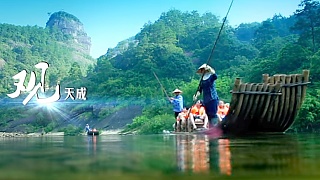
WuYiShan lies in FuJian province and is a UNESCO World Heritage Site.
Beautiful Shangri-La 香格里拉 - road trip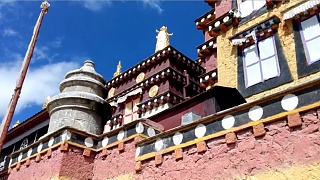
XiāngGéLǐLā, north west YunNan province, near the Tibetan Plateau. Film crew from TaiWan. With wonderful ethereal / spiritual music. Don't miss it ...
Hiking trip to the 'Big Peak' (5025m), Mount SiGuNiang 四姑娘山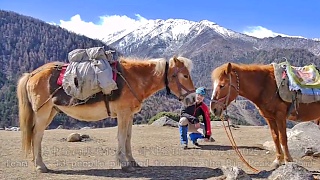
Mount SiGuNiang, in SiChuan province, is famous for its beautiful scenery. The surrounding area is reputed to be the "Oriental Alps". Mount SiGuNiang National Park is a UNESCO World Heritage Site. The park comprises Mount SiGuNiang and the surrounding three valleys, namely ChangPing Valley (长坪沟), HaiZi Valley (海子沟) and ShuangQiao Valley (双桥沟), covering an area of 2,000 square kilometers. Mount Siguniang
Above the clouds - the wonderful scenery at HuangShan 黄山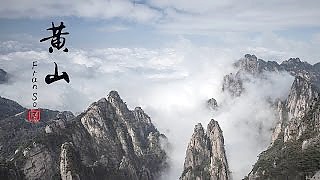
Beautiful views ...
The beautiful ZhangJiaJie 张家界, HuNan province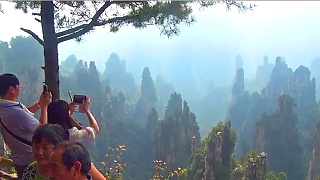
ZhangJiaJie is one part of WuLingYuan National Forest Park in HuNan province, south China, and is a wonderland of strange peaks, stunning valleys, ancient trees, caves and waterfalls. There are over 500 scenic spots in this area of outstanding natural beauty; it is a UNESCO World Heritage site. In all, it covers around 700 square kilometers (270 square miles).
From GuiLin to YangShuo, GuangXi province ...
A visit to the beautiful EnShi Grand Canyon 恩施大峡谷景区
The beautiful MuFu Grand Canyon, near EnShi in the west of HuBei province has some spectacular scenery that can be observed from high level cliff side paths. The area is home to the TuJia and Miao minorities.
Basketball in the mountains - video
A beautiful and heart-warming story ...
Beautiful landscapes around ChongQing 重庆
Mountains, gorges, rivers, lakes, waterfalls, forests, geoparks, nature reserves, national parks and scenic spots. A wonderful film by ChongQing TV (a 25 minute excerpt from the full hour-long video).
YangShuo 阳朔, GuiLin 桂林 and XingPing 兴平 - video
Filmed in 2011. 1) A visit to the YangShuo countryside. The scenery and landscape are so beautiful and breathtaking. Strolling by a bamboo raft along the YuLong River; watching the fabulous cormorant birds catching fish, the YuLong Bridge and the village is well worth the visit. Overall the scenes are picturesque and awesome. 2) The most beautiful scenery of karst mountains from GuiLin to XingPing, YangShuo by bamboo raft along the Li River. 3) Friday morning walk along Li River bank at YangShuo to a small village, than back to West Street to watch the local activities and see what people mostly do - fishing, photography and exercising.
A trip to ZhangJiaJie 张家界, HuNan province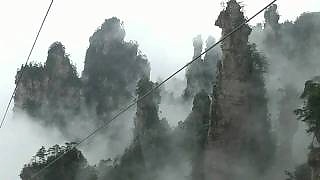
A beautiful National Forest park and renowned scenic area. Includes the world's longest cable car ride (7 km), up through the clouds ...
LongQing Xia 龙庆峡 (Great Dragon Gorge) near Beijing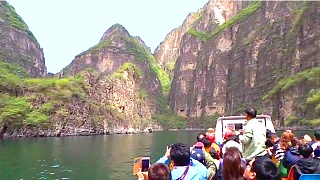
The beautiful LongQing Xia Scenic Area is located 90 kilometers (55 miles) north-west of Beijing. A great day trip from the city. Besides boating, there are also hiking trails, bungee jumping and zip lines.
The beautiful HuangLong 黄龍 Scenic Area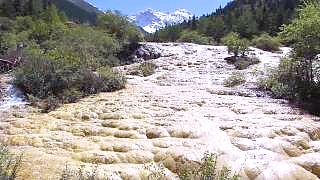
A UNESCO World Heritage Site. HuangLong Scenic Area lies in SiChuan province, about 150km north west from the provincial capital ChengDu. It is famed for its colorful pools formed by mineral deposits, and there are also rich forests full of wildlife, including the Giant Panda, snow-capped peaks, waterfalls and hot springs.
The waterfalls at Tiger Leaping Gorge 虎跳峡
A dramatic gorge on the YangTse river. Situated 60 kilometers north of LiJiang in YunNan province. The gorge runs for about 15 kilometers and has a number of spectacular hiking trails ...
Sunset over the mountains, BeiJing 北京
At the Summer Palace in Beijing. Filmed in October 2010.
XiangShan (Fragrant Hills) Park 香山公园, BeiJing - video
XiangShan Park lies in the well-forested Western Fragrant Hills. This wonderful park is tranquil yet feature rich extending from the lower gardens and temple to the peak (560 meters) with tea-houses, pagodas and more along the way. Don't miss the Tranquil Heart Studio, the main part of which is a long corridor encircling a round pond, and further up the hill (middle route) YuHua Villa and QiYue Villa; all three are now partly tea-houses.
Four days in YangShuo and GuiLin, GuangXi province - video
Riding mopeds, boating on the Li River, rice terraces and caves ...
A ride through the mountains west of Beijing - video
A motorbike and side-car journey through the mountains just west of Beijing ...
ShaoGuan Canyon 韶关峡, DanXia in GuangDong province - video
Beautiful scenery ... DanXia National Park scenic area has many sandstone hills that have over time been eroded to unusual shapes. With CCTV's Travelogue ...
ZhangJiaJie 张家界, WuLing Nature Reserve, HuNan province
Explore China's largest nature forest reserve with CCTV's Travelogue ...
WuLingYuan 武陵源 Scenic Area, HuNan province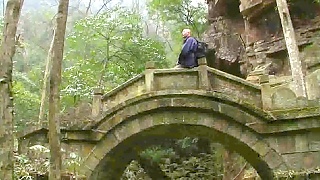
Near the city of ZhangJiaJie in central/south China Filmed in January 2010.
TanZheSi and JieTaiSi : ancient temples west of BeiJing 北京
An informative film, made in early March 2010; there is still snow on the ground. To see these temples at their best, visit between April and September when the mountains are green and the ancient trees give welcome shade from the heat. Fruit tree blossoms are abundant here in spring. One can take a local 'taxi' from one to the other along lovely winding roads through the hills.